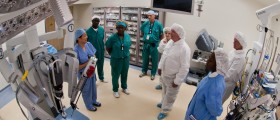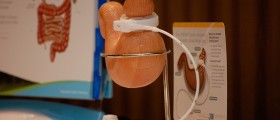
Weight Loss Surgery
The World Health Organization estimated that more than the 400 million of adults worldwide (or about 10%) are obese. There are more obese women than men. Long term obesity is a health issue, which leads to number of medical problems and reduces life expectancy. Some obese people have tried every possible diet and still didn’t manage to permanently lose some weight.
The weight loss surgical procedures are designed to help these obese patients to lose the extra weight and adjust to the new eating and exercise habits. In most cases, these surgeries require just one day in hospital and some postoperative consultations with the specialist. Post-op consults are also counseling sessions, helping them to adapt to the new lifestyle.
Gastric Balloon
Gastric balloon is a non-surgical procedure, designed for people with BMI (the Body Mass Index) under 35. These patients have milder weight problems, which they can’t resolve other way. The procedure lasts for 10 to 15 minutes and is performed under the local anesthesia. The balloon is placed into the stomach through the patients’ mouth, using the endoscopic camera, which is why the procedure is called endoscopic. Procedure might be uncomfortable for some of the patients, but it’s not painful and it doesn’t require the stay in the hospital. The gastric balloon is usually removed after 6 months and the reverse of the operation is also simple. Reverse procedure is done almost the same as the positioning. Gastric balloon is punctured and then removed from the stomach through the mouth in about 10 minutes.
Gastric Band
Gastric band surgery is used for patients with the BMI over 35. It is used in overweight people who have serious problem to lose some of the excess weight.
This is a surgical procedure performed in the hospital, under the general anesthesia. It usually lasts for an hour or so, and at that time a lap band (or adjustable gastric band) is placed around the part of the stomach. The band function is to restrict the amount of food patient can eat. It is usually done by laparoscopic surgery, without significant entry wounds. Lap band can be adjusted or completely removed if necessary or remain constantly on the spot. The surgery requires that the patients stay in the hospital overnight, under the specialists’ care.
Together with the surgical procedures, these patients will have to consult a psychologist and a dietitian, to make sure that the changes they make remain long-term ones.
















Your thoughts on this
Loading...